Using these volleyball positions descriptions, you will know where you fit into the game. One of the great things about volleyball is that regardless of how tall, short, or body type you are, there is a position for you. And no, that position isn’t on the bench!
Outside Hitter
The outside hitters have a few different responsibilities. When they are receiving the serve, they are usually those that pass the ball to the setter. With this position, the outside hitters are typically people that are good at passing the ball.
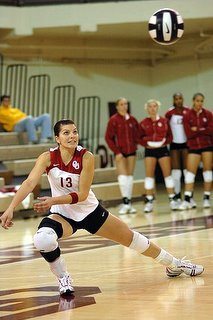 When the outside hitters are also the most accurate hitters on the team. When they are spiking, their place is on the left side of the court (if you are facing the net). Since they are hitting on the outside, their sets are usually higher and to the outside of the court.
When the outside hitters are also the most accurate hitters on the team. When they are spiking, their place is on the left side of the court (if you are facing the net). Since they are hitting on the outside, their sets are usually higher and to the outside of the court.
There are usually two outside hitters on the floor at all times and they usually play opposite of each other in the rotation. That way, one of them will always be in the front row.
The characteristics for this position is that they must pass the volleyball well, they usually jump high, and are accurate hitters. This is one of the volleyball positions that people enjoy as they get to hit quite frequently.
Setter
The setter is to volleyball what the quarterback is to football. This volleyball position is often the most sought after. They are running the show and calling out the plays and running the offense for the team. It is their job to make sure the ball is where it needs to be so that a hitter can put it away.
The second hit is owned by the setter. Since each side can hit the ball three times before the ball goes over the net, a team member will pass it to the setter, the setter will deliver it to the hitter, and the hitter will spike the ball. The second hit is always for the setter and unless they call for help, the rest of the team should get out of the setter’s way.
A setter can also be a hitter depending on the type of offense that is being run. If the setter is on the front row, there is an option for the setter to “dump” the ball on the second net by just pushing it over the net. When done sparingly, it can catch the defense off guard. Also, depending on the type of offense that is being played, there could be one or two setters on the court.
Great setters are usually the smartest player on the floor. They usually have soft hands that allow them to take the spin off the ball when they set it, they can orchestrate the offense, and have great vision to see the defense when they are setting the ball. If they can see the defense when they are setting the ball, they can deliver the ball to their hitters that only have one blocker or no blockers.
Middle Blocker or Middle Hitter
The middle blocker is my favorite of all the volleyball positions. The middle blocker is the freight train in the middle of the front row. They often hit the ball right as the setter is setting it to quickly attack and catch the defense off guard. There is nothing sexier than a quick set that catches the defense looking and the middle blocker crushes it. What a great feeling.
While the other team has the ball, they are responsible for the block. They will follow the ball and block whether in the middle, if it goes to the outside hitter, or the opposite. The ideal situation for defense is to have as many blockers as possible, so the middle blocker must read the setter and move to the ball.
When the middle blocker goes to the back row, they will serve, and then once the other team sides out, the Libero will come in for the middle blocker. As a result, they don’t pass the ball a whole lot and it is not a requirement for them to be good passers.
The middle blockers are generally the tallest people on the team. If there is a tall person that passes well, it may be better to move them to the outside hitter. This is the position that I play, but that is mostly because I am 6’5″.
Opposite Hitter
Opposites are the last of the volleyball positions to discuss. In the rotation of players, they always play opposite the setter’s position and that is where this name comes from.
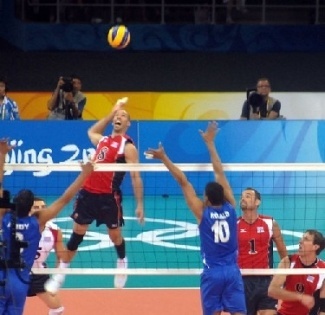 They are generally a third option on the offense at the net as a hitter. Their hitting position is on the right side of the court if you are facing the net.
They are generally a third option on the offense at the net as a hitter. Their hitting position is on the right side of the court if you are facing the net.
In most cases, the setter will have to do a back set (set the ball over his head) to deliver it to the outside. These back sets can sometimes catch the defense by surprise and allow the opposite to get an easy kill.
As a blocker, they are responsible for blocking in the same position which means they are usually blocking against the outside hitter of the other team. A strong opposite blocker can offset the strength of the outside hitter from the other team.
They are also the player that will set the ball if the setter is unable to do so.
This person is usually a jack-of-all-trades as they are required to have all of the facet of skills for a volleyball player. They usually aren’t the best at anything, but can do everything.
Libero
The Libero is a relatively to the volleyball positions. The libero is a defensive specialist and only plays on the back row. When the middle blocker goes to the back row, the libero will come in and play for the middle blocker.
Their primary responsibility is to pass the serve, play defense, and dig spikes. To make identification of the libero easier, their jersey is a different color than the rest of the team.
Since the libero only plays on the back row, they do not need to be tall. Frequently, they are shorter and have fast reactions so that they can be in the right place when the other team attacks.
Hopefully, this summary of volleyball positions will help you know who is responsible for each part of the team’s success. I also hope it will help you decide what volleyball position you should be playing based on your characteristics and skill sets.

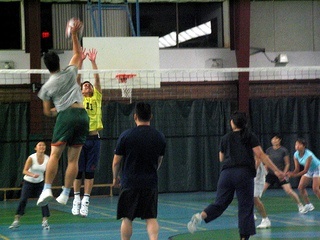 Teaching proper
Teaching proper 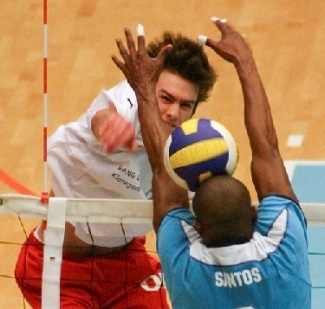
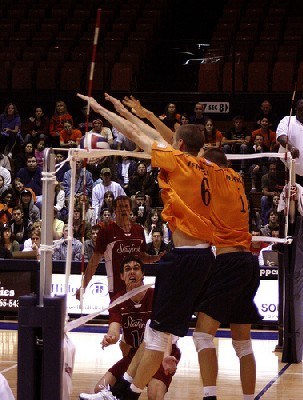
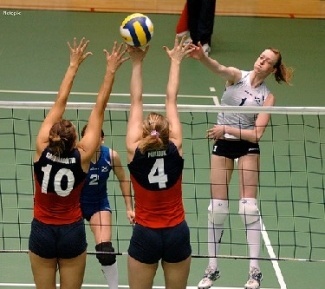 Shoot: This volleyball term is a type of set that is quick to the outside hitter. The outside hitter is usually jumping at the time the setter gets the ball and the setter pushes it just barely higher than the net and the hitter hits the ball.
Shoot: This volleyball term is a type of set that is quick to the outside hitter. The outside hitter is usually jumping at the time the setter gets the ball and the setter pushes it just barely higher than the net and the hitter hits the ball.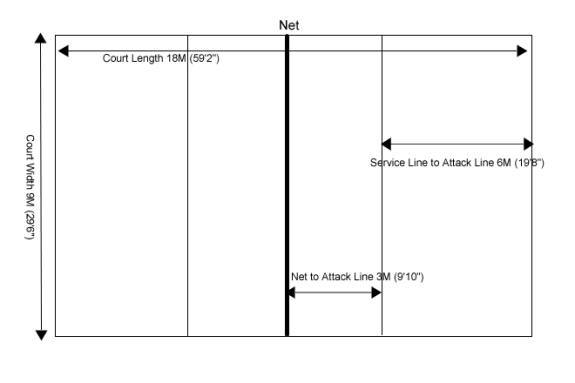
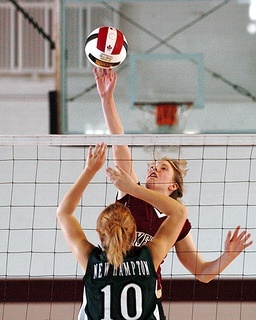 Back row attackers are used to create some devastating plays. If your setter were to set a #1 for your middle blocker and then have the player in the back row in the middle position attack, it would be a difficult play to stop. Why? Because the players blocking in the middle on the other team are going to jump to block the front middle hitter, and then as they are landing from their block, the back row hitter would be the one to hit with virtually no blockers.
Back row attackers are used to create some devastating plays. If your setter were to set a #1 for your middle blocker and then have the player in the back row in the middle position attack, it would be a difficult play to stop. Why? Because the players blocking in the middle on the other team are going to jump to block the front middle hitter, and then as they are landing from their block, the back row hitter would be the one to hit with virtually no blockers.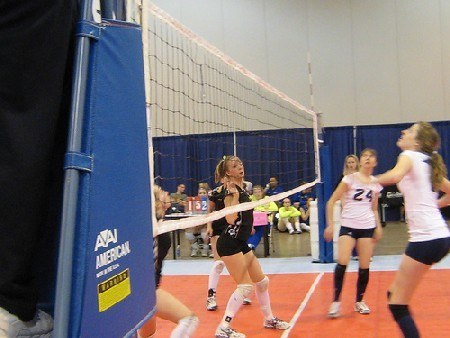
 When the outside hitters are also the most accurate hitters on the team. When they are spiking, their place is on the left side of the court (if you are facing the net). Since they are hitting on the outside, their sets are usually higher and to the outside of the court.
When the outside hitters are also the most accurate hitters on the team. When they are spiking, their place is on the left side of the court (if you are facing the net). Since they are hitting on the outside, their sets are usually higher and to the outside of the court. They are generally a third option on the offense at the net as a hitter. Their hitting position is on the right side of the court if you are facing the net.
They are generally a third option on the offense at the net as a hitter. Their hitting position is on the right side of the court if you are facing the net.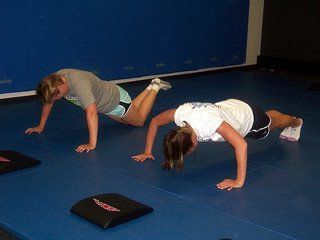
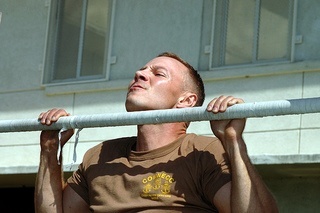 Max Pull-ups
Max Pull-ups